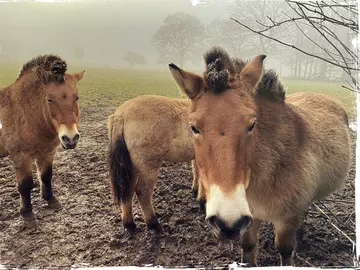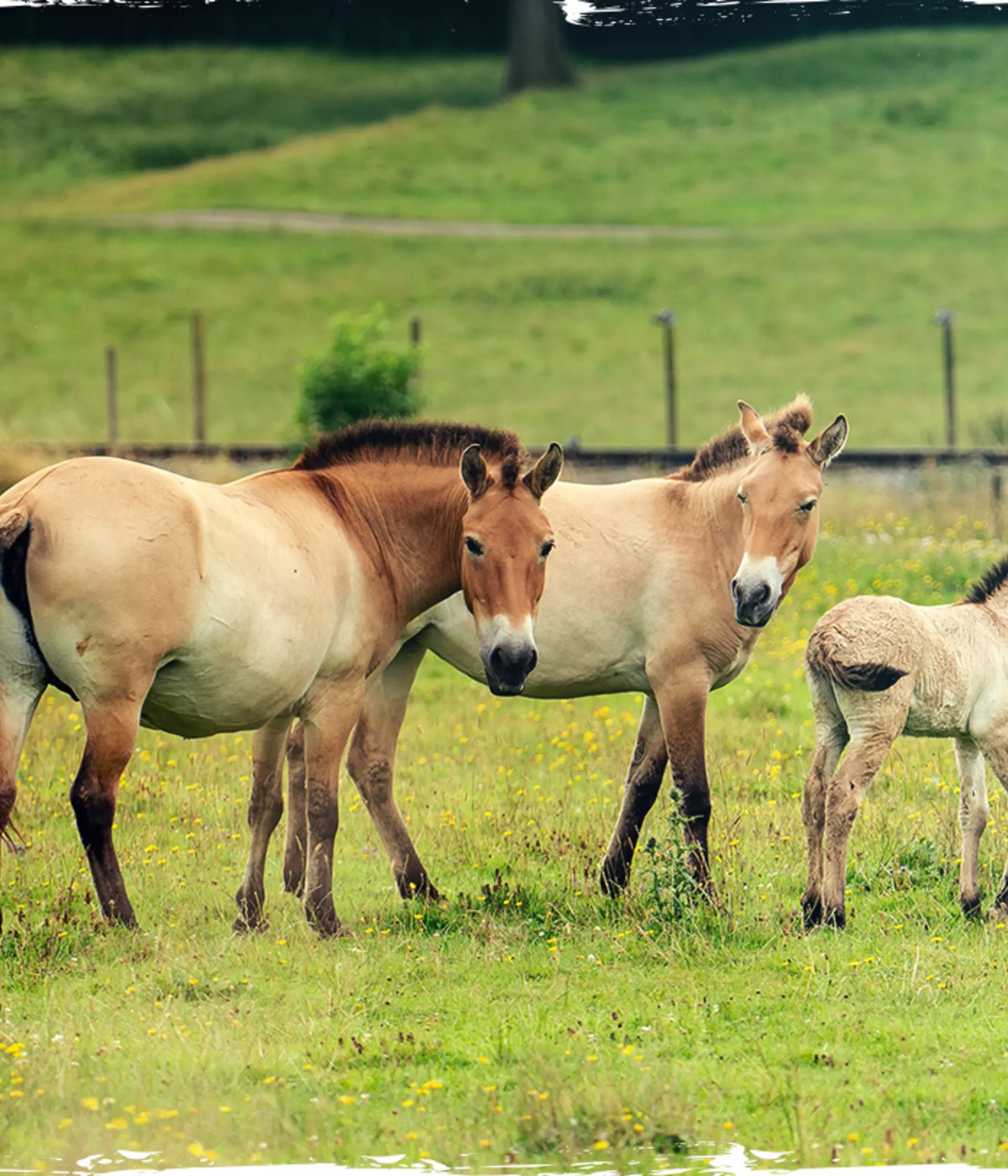
Adam Davinson, Senior Keeper at Whipsnade Zoo, reveals how a breeding programme at the Zoo has helped to save the majestic Przewalski’s horse – the last wild horse on earth.
If any animal can truly claim to be Back from the Brink, it’s the Przewalski’s horse. The only wild horse in existence, these stocky and spirited creatures became extinct in the wild as recently as 1969.
But now, thanks to the work of ZSL and our partners, a successful captive breeding programme has seen numbers bounce back. So much so, that the wild and wonderful Przewalski’s horse (pronounced shuh-VAL-skee) has been reintroduced to its native habitat in Mongolia.
Little wonder, Mongolians prefer to call this majestic horse takhi, meaning worthy of worship.
Adam is lucky enough to work with this enchanting species on a daily basis:
“Our breeding herd currently consists of two adult females, Charlotte and Shargahan, a young female, Sooton and breeding male, Hulagu,” he says proudly. “Here at Whipsnade, we’ve been very successful in breeding Przewalski’s horses. As keepers, one of the best things about our role is witnessing animal births, so it’s a privilege to look after these amazing creatures. Every day, I feed them pellet and clean their house and yard, picking up their poo from the paddock – quite a time-consuming job!”

What are Przewalski’s horses like?
The horse was originally discovered by Nikolai Przewalski, a 19th-century geographer and explorer.
Once thought to be the ancestor to the domestic horse, researchers discovered they are actually distant cousins with their own separate ancient origins. Stockily built and shorter than the domestic horse, Przewalski’s horses are a distinctive dun colour, possessing a dark zebra-like erect mane and no forelock.
At Whipsnade, the breeding herd, managed within an EAZA Ex-situ Breeding Programme, enjoy a large enclosure, with plentiful grazing and wooded areas for cover.
“The ex-situ programme means we contribute to maintaining a stable and genetically diverse captive population that can be drawn upon for reintroduction of the species,” explains Adam. “It also enables us to educate the public about the species and participate in research to help further our understanding of them.”

While there’s still a long way to go in restoring the species in its former range, the story of the Przewalski’s horse provides hope and an inspiring lesson about why zoos are important and what can be achieved for threatened species.
“This is one of the best examples of collaborative conservation efforts by zoos and conservation organisations,” confirms Adam. “It’s been such a great turnaround for the species, now being classified as ‘Endangered’ rather than ‘Extinct in the Wild’.
“It’s so gratifying to contribute to conservation, education and research via our work here at the Zoo. Knowing that the money raised here is able to fund such great conservation programmes all over the world makes this such a rewarding role.”
